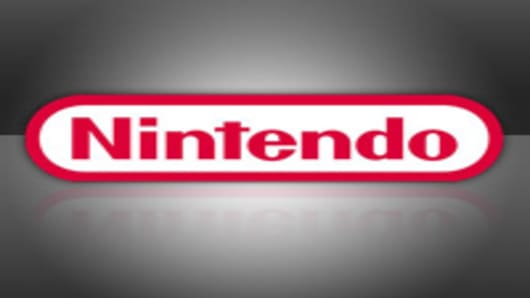While some E3 show goers might be willing to wait five hours or more to get a few minutes of hands-on time with Nintendo's recently unveiled next-generation console, investors were less enthusiastic about the Wii U.
The company's stock fell 5 percent the day it showed off the system—and was down another 7 percent on Wednesday. In an interview at the E3 trade show, Nintendo's global president Satoru Iwata said he felt investors were overreacting.
"[This happens] whenever we come out with something brand new and try to do something unprecedented," he said. "People have never had this kind of experience before [and] they cannot completely appreciate it."
"It reminds me of the situation in 2006, when for the first time we showed the Wii system. At the show, people were excited and enthused about the prospect of the Wii at the time, but as soon as I returned to Japan, I noted the [reaction] there was much different. There was so much skepticism surrounding Wii at the time."
Iwata acknowledges that Nintendo might do a good job of exciting gamer audiences in-person, but likely needs to improve the way it targets messages to its investors.
"They cannot appreciate the real value … and they are not [going] to feel the enthusiasm surrounding our booth right now," he says. "We are trying to invent some mechanism to better communicate the real value of the Wii U."
While the Wii U is brand new to most of the world, the company has been working on it internally for years—practically since the Wii first hit shelves, in fact.
As far back as 2007, the company knew it wanted to add a second screen to its next system, says Iwata. At the time, though, it couldn't decide where that screen should go.
Initially, in fact, the second screen was a separate device that was to be placed on a table, not attached to the controller. Also, the screen was much smaller, due to the higher costs of LCDs at the time.
"Considering how expensive screens were then, it did not make sense to have this big sized LCD," he says. "We would not have been able to come up with a reasonable price point."
He added, "We had not decided when we were going to launch the new console [at that point], but we knew we needed to be flexible."
The release of Wii U will not mean the end of the Wii, either, says Iwata. The company believes the system still has life left and will continue to be attractive to late-cycle console adopters—people who generally wait for deep price cuts before buying a new system. The Sony has been quite successful in attracting that audience by keeping the PlayStation 2 available as the PS3 has dominated gaming headlines.)
While it's too early to discuss the pricing for Wii U, Iwata was willing to discuss software pricing for the machine in broad terms. While game prices for Microsoft's Xbox and the PS3 jumped to $60 this generation, Wii titles stayed put at $50. With the Wii U incorporating high definition graphics, that could raise costs.
Iwata concedes that some top franchises are likely to cost more, but says he doesn't think that will be the case with all games.
"I think there is already some indication that the [current pricing] trend is going to stay here," he says.
"When you consider some of the most popular franchise—such as "Call of Duty" or "Madden"—the publishers can afford to affix a rather expensive price tag on that because the franchise has a premium value. On the other hand, without an established franchise, they cannot afford to keep that expensive price tag. I believe there will be a wider price range."



